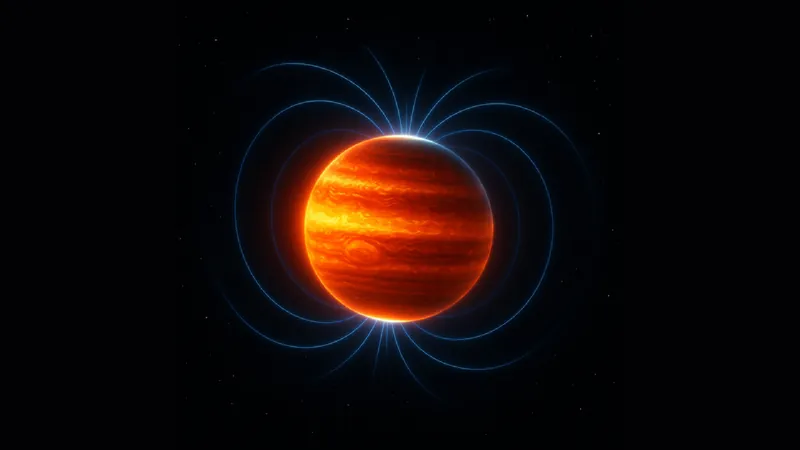
Jupiter Shrinks: A Stunning Discovery Reveals It Was Once Twice Its Current Size!
2025-05-23
Author: Arjun
A New Look at Jupiter's Past
In a groundbreaking revelation, scientists have discovered that Jupiter, the colossal giant of our solar system, used to be an even more gigantic entity. According to a recent study, published on May 20 in *Nature Astronomy*, this gaseous behemoth was at least double its present size around 4.5 billion years ago.
During this ancient epoch, as the primordial cloud of gas and dust that birthed the sun and planets started to dissipate, Jupiter boasted a magnetic field approximately 50 times stronger than what we see today.
Unlocking the Secrets of Planetary Formation
The quest to decode the origins of our solar system is a tantalizing puzzle. Konstantin Batygin, a planetary scientist at Caltech and co-author of the study, emphasized, "Understanding the early phases of planet formation is essential to solving the puzzle of our existence. This research inches us closer to uncovering how not just Jupiter, but our entire solar system was sculpted."
Jupiter's Colossal Influence
With its monumental gravitational pull, alongside that of the Sun, Jupiter profoundly influenced the orbits of neighboring planets and celestial bodies. Yet, the specifics of how this gas giant formed remain shrouded in mystery.
A Deep Dive into Jupiter's Moons
To enhance their understanding of Jupiter's formative years, researchers focused on the orbits of two of its moons, Amalthea and Thebe. Despite the slight tilting of their paths over time, which have been subtly altered by the gravitational dance of the volcanically active moon Io, scientists utilized these shifts to backtrack to Jupiter's original size.
Mind-Blowing Calculations
The scientists calculated that, to maintain the moons' current orbits, Jupiter's radius must have ranged between two and 2.5 times its size today. This massive planet has gradually shrunk since then as it cooled over the eons. By establishing this size, they estimated that the magnetic field would have surged to around 21 milliteslas, a staggering 50-fold greater than what we currently measure, and 400 times stronger than Earth's!
A Glimpse into History
Fred Adams, an astrophysicist at the University of Michigan and co-author of the study, remarked, "It's astonishing that even after 4.5 billion years, enough clues remain to let us reconstruct Jupiter's physical state at the dawn of its existence." This discovery not only enriches our understanding of the solar system at a pivotal time but also offers a reliable benchmark for future explorations.
The Bigger Picture
This research shines a new light on the mystery of how planetary bodies formed and evolved, setting the stage for more confident reconstructions of our solar system's history. The lingering questions about Jupiter's formation remain, but armed with this knowledge, scientists are poised to delve even deeper into the mysteries of our cosmic neighborhood.

 Brasil (PT)
Brasil (PT)
 Canada (EN)
Canada (EN)
 Chile (ES)
Chile (ES)
 Česko (CS)
Česko (CS)
 대한민국 (KO)
대한민국 (KO)
 España (ES)
España (ES)
 France (FR)
France (FR)
 Hong Kong (EN)
Hong Kong (EN)
 Italia (IT)
Italia (IT)
 日本 (JA)
日本 (JA)
 Magyarország (HU)
Magyarország (HU)
 Norge (NO)
Norge (NO)
 Polska (PL)
Polska (PL)
 Schweiz (DE)
Schweiz (DE)
 Singapore (EN)
Singapore (EN)
 Sverige (SV)
Sverige (SV)
 Suomi (FI)
Suomi (FI)
 Türkiye (TR)
Türkiye (TR)
 الإمارات العربية المتحدة (AR)
الإمارات العربية المتحدة (AR)